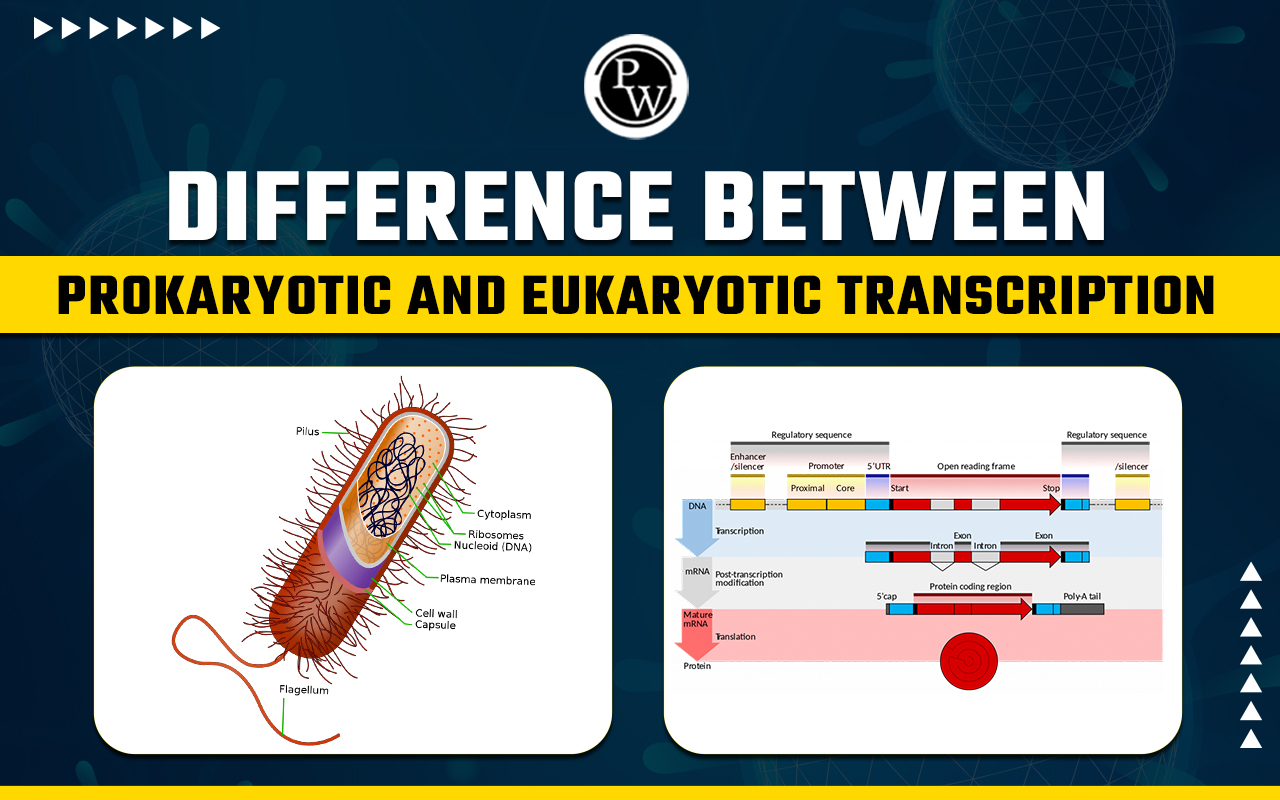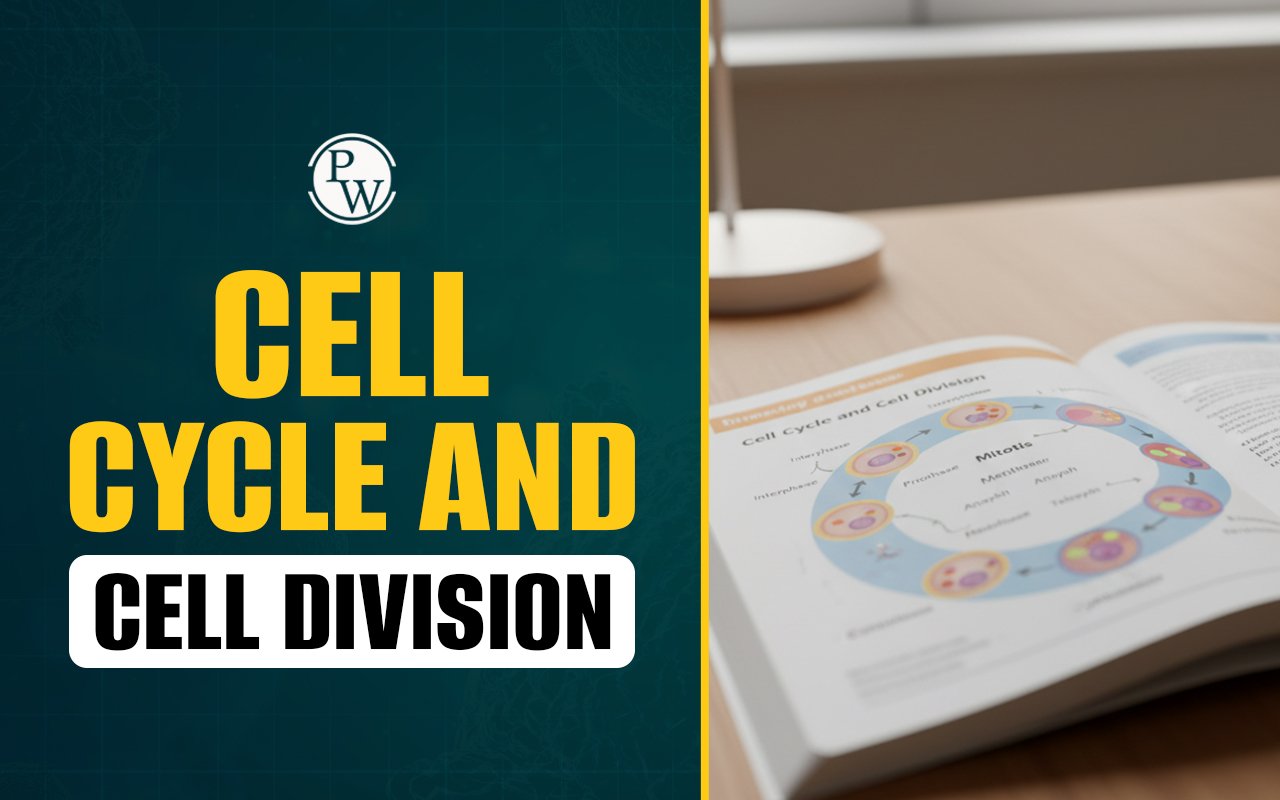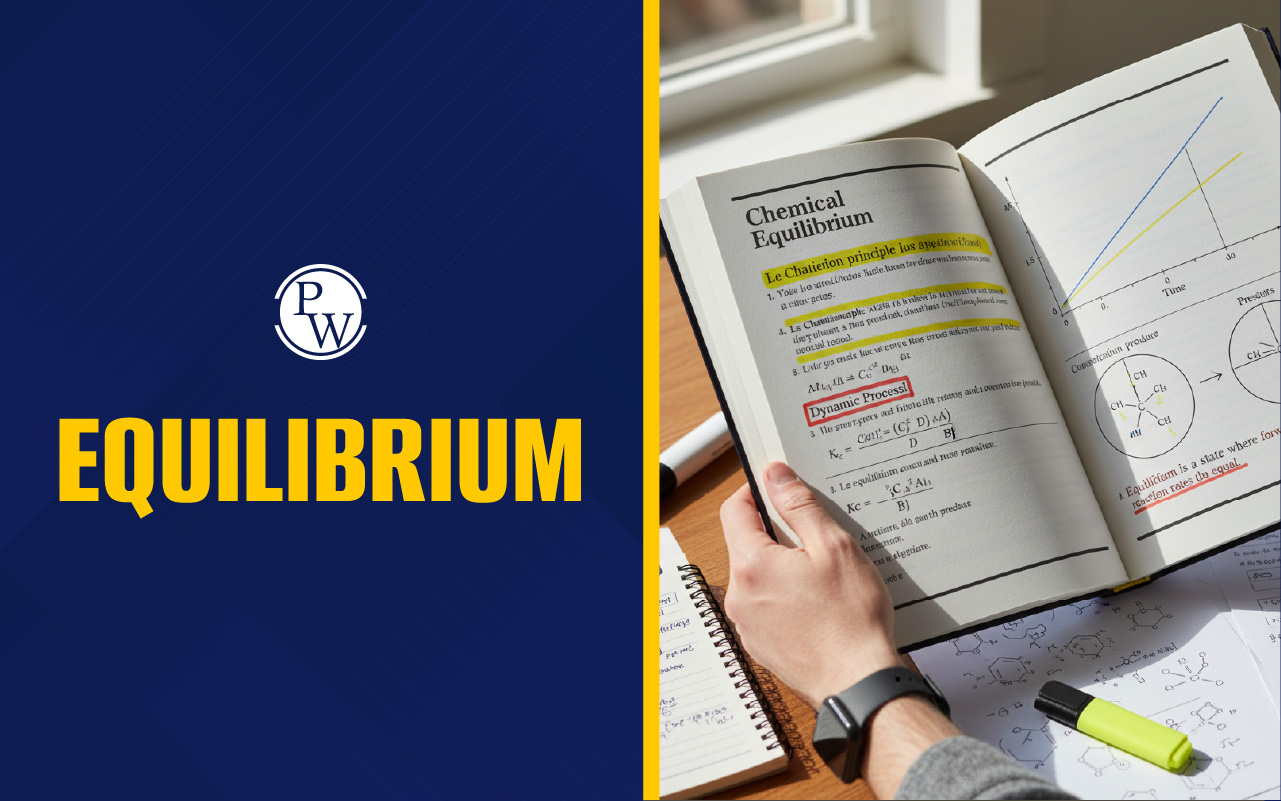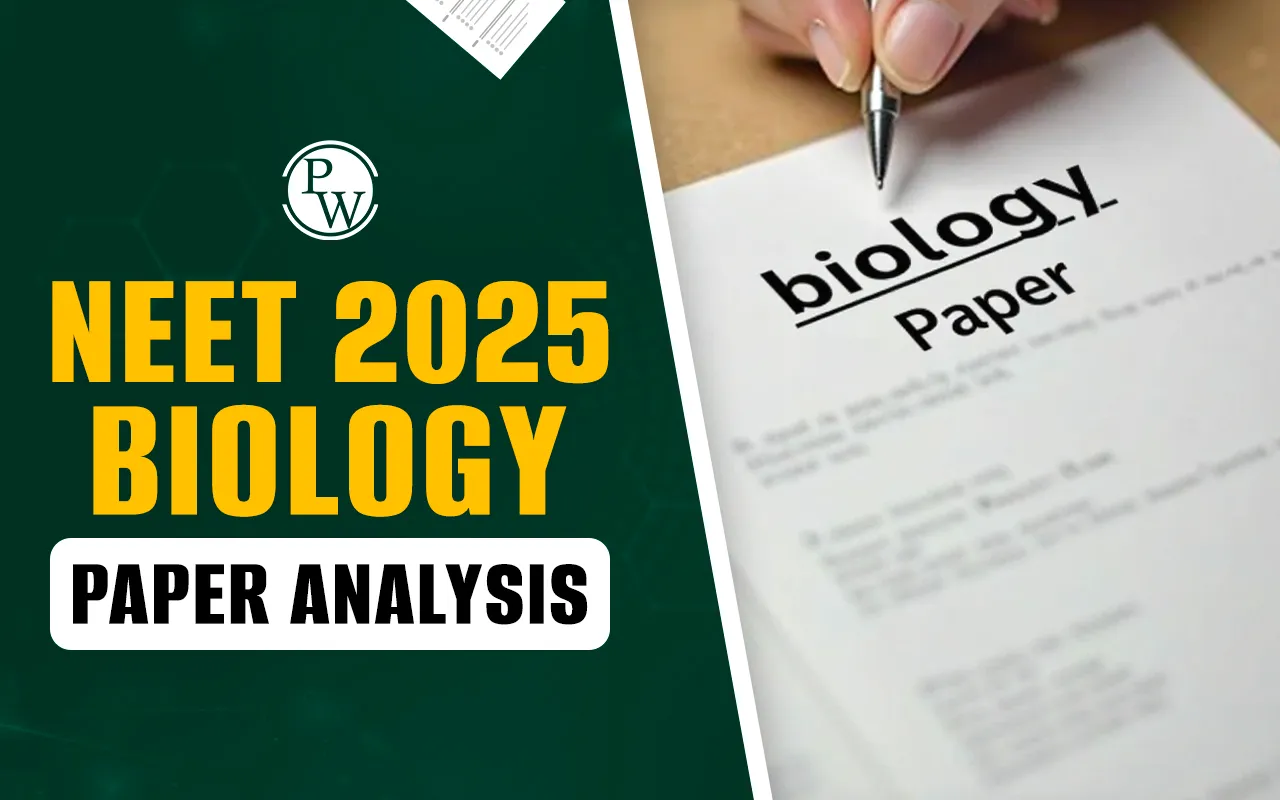

Difference Between Prokaryotic And Eukaryotic Transcription: Transcription is a vital process essential for the reproduction and evolution of life on Earth. Deoxyribonucleic Acid (DNA) is formed by converting a single-strand polymer chain called Ribonucleic Acid (RNA) into a double-strand polymer chain. DNA serves as the blueprint of an organism, carrying genetic information inherited from its parents. RNA is synthesized during this process and provides a template for further DNA development, which occurs as organisms grow.
Transcription varies greatly between eukaryotes and prokaryotes: eukaryotes are unicellular organisms without a definite structure or organelles, while prokaryotes have well-structured cells with organelles. One key distinction is the absence of RNA capping in prokaryotic cells. In eukaryotic transcription, capping takes place at the 5' position of mRNA, a step not present in prokaryotic cells.
Additionally, in eukaryotic cells, RNA processing occurs in the cytoplasm and nucleus at different times, whereas in prokaryotic cells, both processes happen simultaneously. Another notable difference is the involvement of the σ factor in initiating transcription in prokaryotic cells, which is absent in eukaryotic cells. The article provided below details the difference between prokaryotic and eukaryotic transcription.
Difference Between Prokaryotic And Eukaryotic Transcription Overview
Prokaryotic transcription occurs within the cytoplasm, whereas eukaryotic transcription occurs in the nucleus, marking a fundamental difference between prokaryotic and eukaryotic transcription. Another notable difference is that prokaryotic transcription produces polycistronic mRNA, whereas eukaryotic transcription produces monocistronic mRNA, highlighting another contrasting characteristic.
Furthermore, prokaryotic transcription uses a single type of RNA polymerase, whereas eukaryotic transcription uses three different types of RNA polymerases, which adds to the differences between the two processes. Also, there is a significant difference in the coupling of transcription and translation in prokaryotes versus eukaryotes.
Furthermore, prokaryotes lack post-transcriptional modifications, whereas eukaryotes do, which leads to another key difference between prokaryotic and eukaryotic transcription. The following article goes into more detail about the difference between prokaryotic and eukaryotic transcription.
Difference Between Prokaryotic And Eukaryotic Transcription
Transcription is the process by which our bodies copy information from DNA to another molecule known as RNA. It is similar to making a copy of the genetic information storThis process creates RNA molecules based on the DNA sequence. Because the RNA sequence matches the DNA sequence, the information in RNA is identical to that of the gene. Although the basic chemistry and process of transcription are similar in both Prokaryotic and Eukaryotic cells, there are some differences between them. The table below outlines the difference between prokaryotic and eukaryotic transcription:
| Difference Between Prokaryotic And Eukaryotic Transcription | |||
| S. No. | Category | Prokaryotic Transcription | Eukaryotic Transcription |
| 1 | Location | Takes place in the cytoplasm | Occurs within the nucleus |
| 2 | DNA Complexity | Single circular chromosome | Multiple linear chromosomes |
| 3 | Transcription Machinery | Involves RNA polymerase and sigma factor | Utilizes RNA polymerase and transcription factors |
| 4 | Promoter Recognition | Identifies specific DNA sequences (consensus sequences) | Recognizes core promoter elements, enhancers, and other regulatory elements |
| 5 | Enzymes | Utilizes RNA Polymerases I, II, III | Relies on a single RNA Polymerase |
| 6 | Transcription Start Site | Often lacks a defined start site | Has a defined start site (TATA box or initiator element) |
| 7 | Number of Polypeptides | Involves five polypeptides | Involves ten to fifteen polypeptides |
| 8 | Transcription Termination | Typically involves a hairpin loop followed by a string of uracil (U) bases | Requires cleavage and polyadenylation of the pre-mRNA |
| 9 | Transcriptional Units | Commonly organized into operons | Operons are rare or absent |
| 10 | Transcription Factors | Involves few transcription factors | Requires multiple transcription factors |
| 11 | RNA Processing | Experiences minimal mRNA processing | Undergoes extensive mRNA processing |
| 12 | Splicing | Generally lacks introns or splicing | Commonly involves introns and undergoes splicing |
| 13 | RNA Stability | mRNA is generally less stable | mRNA is more stable |
| 14 | mRNA Export | Translation can occur immediately | Requires processing and export to the cytoplasm |
| 15 | Translation Coupling | Transcription and translation are simultaneous | Transcription and translation occur in separate locations |
| 16 | Post Transcriptional Regulation | Limited regulatory mechanisms | Involves extensive regulatory mechanisms (e.g., alternative splicing, RNA editing) |
| 17 | Transcription Rate | Generally exhibits a higher rate | Generally exhibits a lower rate |
| 18 | Complexity Control | Involves few regulatory mechanisms | Involves extensive regulatory mechanisms |
Prokaryotic Transcription
Prokaryotic transcription occurs within the cytoplasm and is always coupled with translation. The process involves four stages: binding, initiation, elongation, and termination. RNA polymerase is the key enzyme responsible for synthesizing the mRNA strand. The initial step is the binding of RNA polymerase to the promoter sequence. In bacterial cells, a single type of RNA polymerase exists, which synthesizes all RNA classes, including mRNA, tRNA, and rRNA. Escherichia coli (E. coli) contains RNA polymerase with two α subunits, two β subunits, and a sigma factor. The sigma factor binds to the DNA promoter sequence, leading to the unwinding of the DNA double helix and initiating the process
During elongation, RNA polymerase utilizes one of the DNA strands as a template, synthesizing the RNA strand while moving along the DNA strand and unwinding the helix in the 5’ to 3’ direction. Consequently, the RNA strand grows from 5′ to 3′, forming a short hybrid with the DNA strand. Termination occurs when the termination sequence is reached. In prokaryotes, there are two termination types: factor-dependent termination, requiring the Rho factor, and intrinsic termination, which occurs when the template contains a short GC-rich sequence near the 3′ end after several uracil bases.
Eukaryotic Transcription
Eukaryotic transcription occurs within the nucleus. Eukaryotic transcription, like prokaryotic transcription, consists of four steps: binding, initiation, elongation, and termination. However, eukaryotic transcription is more difficult than prokaryotic transcription. There are three types of RNA polymerases within a eukaryotic cell: RNA pol I, II, and III. They differ in location and the types of RNA they produce. RNA polymerase joins the DNA at the promoter region with the help of transcriptional factors.
As the DNA helix breaks down into single strands, RNA polymerase catalyzes the formation of an mRNA sequence from the template strand. The RNA strand extends from 5′ to 3′, forming a brief hybrid with the DNA strand, which is known as elongation. Elongation stops when it reaches a special sequence known as a termination signal. The termination process is regulated by a variety of signals that differ depending on the enzyme involved.
In addition, the initial RNA sequence produced by transcription is premature and contains unnecessary segments. As a result, modifications occur prior to translation to produce mature mRNA. These modifications include RNA splicing, 5' capping, and 3' adenylation, among others. Once these changes are complete, the mRNA sequence is transported to the cytoplasm. Unlike prokaryotes, eukaryotic transcription and translation do not co-occur.
Physics Wallah offers the Best Online Coaching in India. PW NEET online coaching is known for exceptional faculty and flexible study hours. PW Online Coaching is an excellent resource for students getting ready for the NEET exam.
Check NEET Exam Important Links
| NEET Exam Important Links | |
|---|---|
| NEET Syllabus | NEET Biology Diagrams |
| NEET Biology MCQ | NEET Biology Chapter wise Weightage |
| NEET Biology Notes | NEET Previous Year Question papers |
Difference Between Prokaryotic And Eukaryotic Transcription FAQs
What distinguishes prokaryotic from eukaryotic replication?
How does eukaryotic transcription occur?
What does the TATA box represent in transcription?
What are the steps involved in prokaryotic transcription?
Where does eukaryotic transcription take place?












